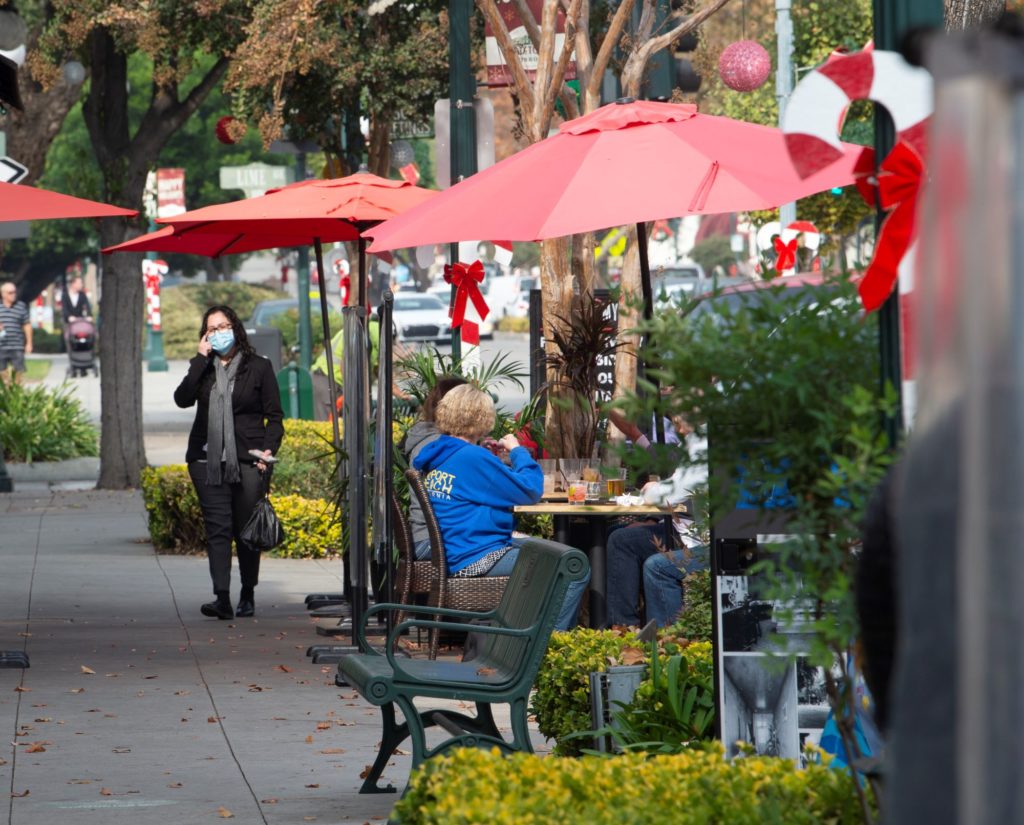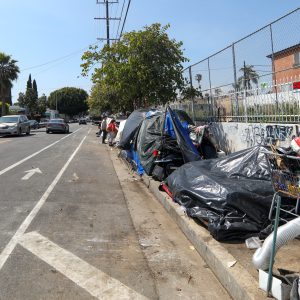 View Winners →
View Winners → What is in L.A. County’s New Stay-at-Home Order?

With COVID-19 cases and hospitalizations surging, a new round of restrictions went into effect on Monday in L.A. County and will remain in effect for three weeks through Dec. 20.
Under the new order, residents are advised to stay home as much as possible and always wear a face covering over their nose and mouth when they are outside their household and around others.
Here’s what the next three weeks will look like in L.A. County:
Restaurants, Breweries and Wineries
On Nov. 25, L.A. County health officials shut down outdoor dining in restaurants, bars, breweries and wineries, noting a “high risk of transmission of COVID-19 when people are eating, drinking and talking together without a face covering, as happens when people are dining onsite at restaurants.” These establishments are permitted to remain open for pick-up, delivery, and take-out and breweries and wineries may remain open for retail sales at 20% occupancy. Pasadena, which has its own health department, will continue to allow outdoor dining.
Gatherings
Gatherings: All public and private gatherings with individuals not in a single household are prohibited, except for church services and protests, which are constitutionally protected rights.
Retail, Personal Care, Gyms, Libraries and Museums etc.
Occupancy limits at various businesses; all individuals at these sites are required to wear face coverings and keep at least 6 feet of distance:
- Essential retail – 35% maximum occupancy.
- Non-essential retail (includes indoor malls) – 20% maximum occupancy.
- Personal care services – 20% maximum occupancy.
- Libraries – 20% maximum occupancy.
- Fitness centers operating outdoors – 50% maximum occupancy.
- Museums galleries, zoos, aquariums, botanical gardens operating outdoors – 50% maximum occupancy.
- Mini-golf, batting cages, go-kart racing operating outdoors – 50% maximum occupancy.
- Cardrooms will have to close.
Outdoor Recreation
Outdoor recreation activities all which require face coverings (except for swimming) and distancing:
- Beaches, trails, and parks remain open; gatherings at these sites with members outside a single household are prohibited.
- Golf courses, tennis courts, pickleball, archery ranges, skate parks, bike parks, and community gardens remain open for individuals or members of a single household. Pools that serve more than one household may open only for regulated lap swimming with one person per lane.
- Drive-in movies/events/car parades are permitted provided occupants in each car are members of one household.
- Playgrounds (with the exception of playgrounds at childcare and schools) will have to close.

A guide to what’s open at L.A. County parks. | Graphic courtesy of L.A. County Parks & Recreation on Twitter
Schools
- All schools and day camps remain open adhering to re-opening protocols. K-12 Schools and Day Camps with an outbreak (three cases or more over 14 days) should close for 14 days.
On Sunday, the Los Angeles County Department of Public Health confirmed 5,014 new COVID-19 cases and 16 new deaths.
Health officials warned that if the situation does not improve, the county could be working at further restrictions.
“If this doesn’t work, and two to three weeks from now we find ourselves in a worse place than we are, we’re going to have to go back and look at what else do we have as options, because we cannot continue to risk overwhelming the healthcare system,” said Dr. Barbara Ferrer, director of public health. “I don’t think there’s any disagreement about that — that’s a disaster that we have to avoid at all costs.”









































































































